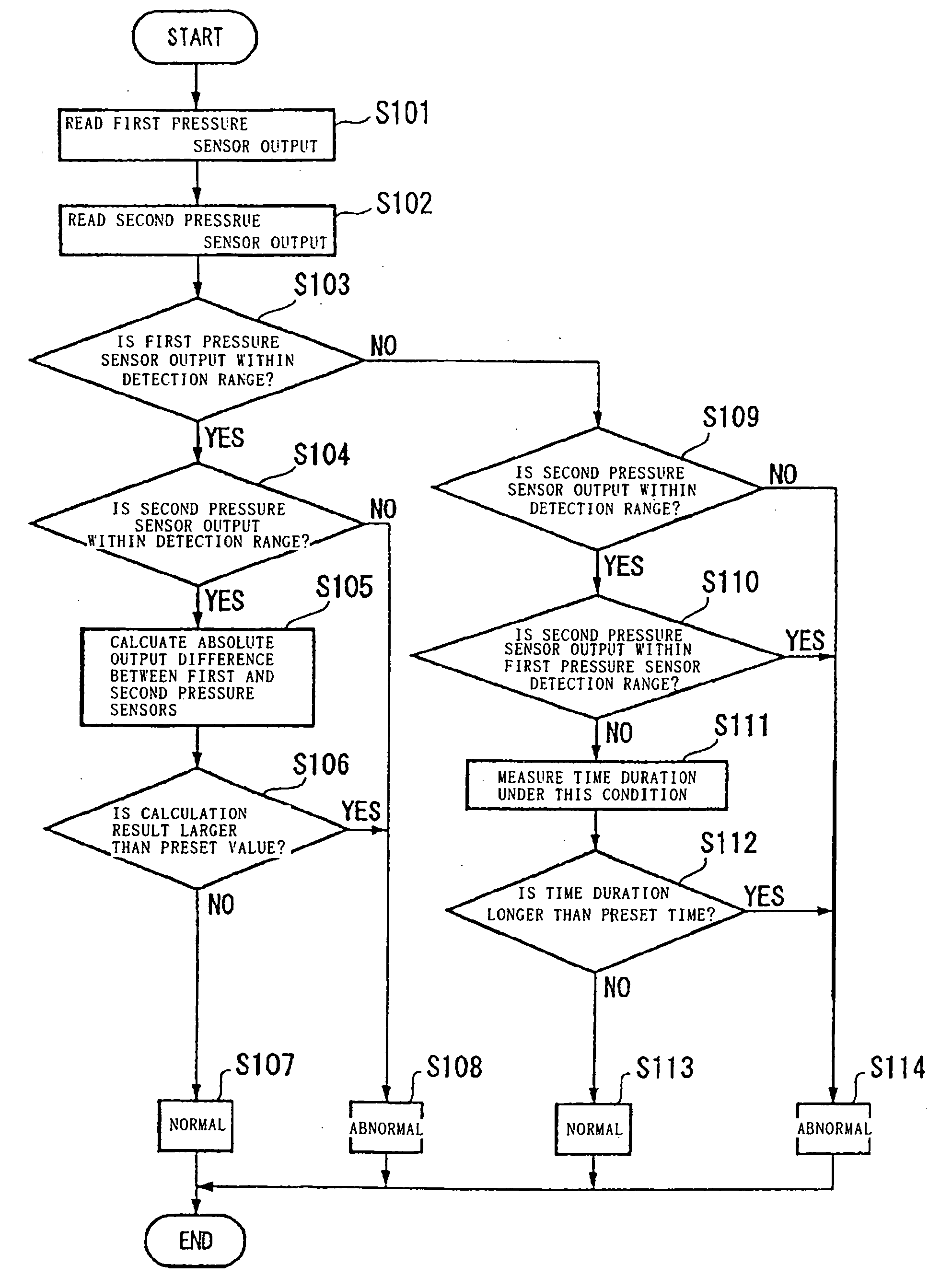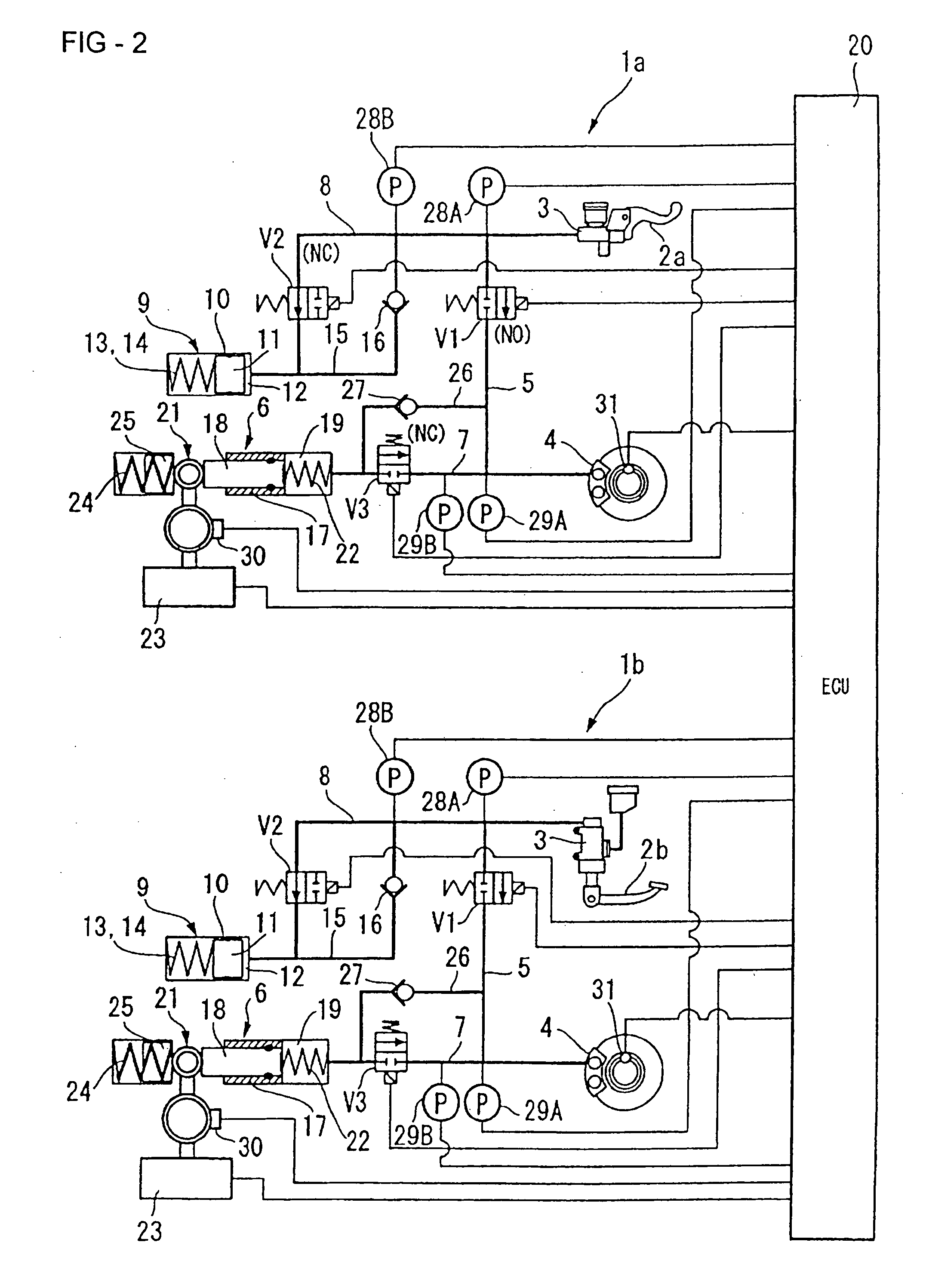Electronic braking device
- Summary
- Abstract
- Description
- Claims
- Application Information
AI Technical Summary
Benefits of technology
Problems solved by technology
Method used
Image
Examples
first embodiment
[0035]FIG. 1 is a hydraulic circuit diagram of an electronic braking device for a motorcycle according to the present invention. As shown in the figure, the electronic braking device in this embodiment consists of a front wheel brake circuit 1a and a rear wheel brake circuit 1b which are independent of each other and connected via an electronic control unit (ECU) 20.
[0036] The front wheel brake circuit 1a and the rear wheel brake circuit 1b are substantially structurally the same, except that for brake control, the front wheel brake circuit 1a relies on a brake lever 2a as a brake operating unit 2 and the rear wheel brake circuit 1b relies on a brake pedal 2b as a brake operating unit 2. Therefore, only the front wheel brake circuit 1a will be described in detail, and the elements of the rear wheel brake circuit 1b which are the same as those of the front wheel brake circuit 1a are designated by the same reference numerals and their descriptions are omitted.
[0037] The electronic br...
second embodiment
[0090]FIG. 6 is a hydraulic circuit diagram of a braking device for a motorcycle according to the present invention. As shown in the figure, the braking device in this embodiment consists of a front wheel brake circuit 1a and a rear wheel brake circuit 1b which are independent from each other and connected via an electronic control unit (ECU) 20.
[0091] As in the first embodiment, the front wheel brake circuit 1a and the rear wheel brake circuit 1b of the second embodiment are structurally substantially the same except that for brake control, the front wheel brake circuit 1a relies on a brake lever 2a as a brake operating unit 2 and the rear wheel brake circuit 1b relies on a brake pedal 2b as a brake operating unit 2. Therefore, only the front wheel brake circuit 1a will be described in detail, and the elements of the rear wheel brake circuit 1b which are the same as those of the front wheel brake circuit 1a are designated by the same reference numerals and their descriptions are om...
PUM
 Login to View More
Login to View More Abstract
Description
Claims
Application Information
 Login to View More
Login to View More - R&D
- Intellectual Property
- Life Sciences
- Materials
- Tech Scout
- Unparalleled Data Quality
- Higher Quality Content
- 60% Fewer Hallucinations
Browse by: Latest US Patents, China's latest patents, Technical Efficacy Thesaurus, Application Domain, Technology Topic, Popular Technical Reports.
© 2025 PatSnap. All rights reserved.Legal|Privacy policy|Modern Slavery Act Transparency Statement|Sitemap|About US| Contact US: help@patsnap.com



